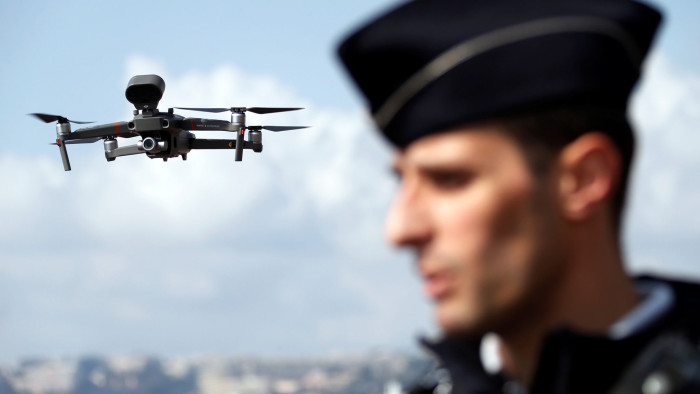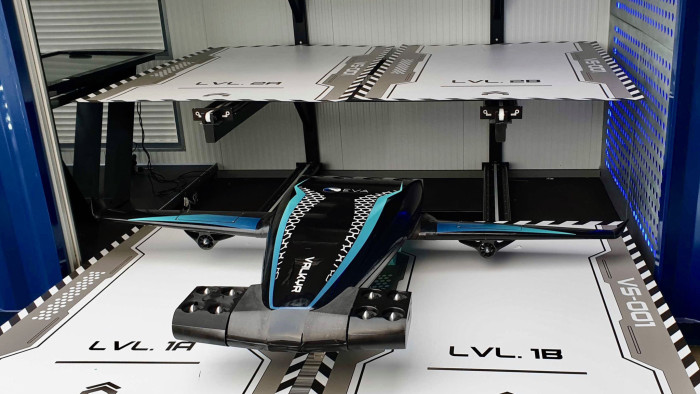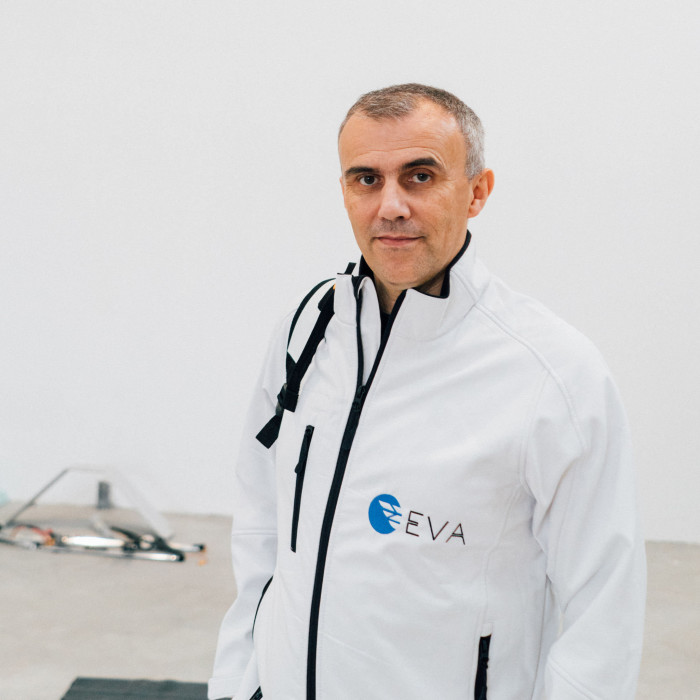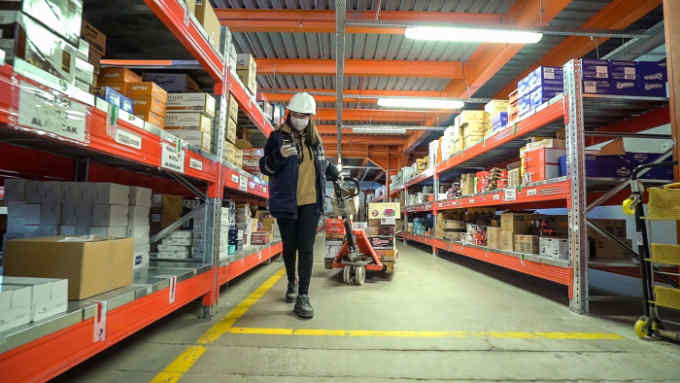Lockdown crisis is a catalyst for novel drone deployment

Roula Khalaf, Editor of the FT, selects her favourite stories in this weekly newsletter.
Ancient Greek historian Herodotus once said of Persia’s courier system: “nothing mortal travels faster”.
Persia had men and horses ready and waiting at specific intervals, each messenger assigned to one day of travel. This enabled them to deliver messages in a week that would otherwise have taken three months by an army on foot.
Now that model is being refined for the digital age with unmanned aircraft.
EVA, a Brooklyn-based start-up founded in 2017, is building infrastructure that would let drones zoom extensively across large conurbations and beyond 24 hours a day, pausing at pit stops to quickly swap batteries or recharge.
Only six months ago, EVA was still hunting for its first customer. Now, with Covid-19 serving as a catalyst for contactless delivery systems, it has so much interest that it has been forced to outsource production of its logistics hubs to keep up, says chief executive Olivier Le Lann, a former Tesla executive.
He describes demand as “positively violent for the company”, which plans to double headcount from 14 to 28 in the next six weeks.
“The drone revolution was maybe going to happen in one year, two years, three years from now, but it has suddenly been brought to the top of the agenda,” adds Mr Le Lann.
EVA’s sudden expansion is just one example of how coronavirus is serving as a catalyst for deploying drones in new ways. Police in the US, UK, France and Italy are equipping unmanned aircraft with loudspeakers to enforce social distancing or communicate with the homeless.
Hospitals are transferring medical equipment and test kits to one another via unmanned flight. Designers are promoting drones with virus-zapping ultraviolet lights attached that can hover over and disinfect public spaces. Car dealers in China are even taking online orders and then delivering keys to the balconies of new buyers.

Impressive as these applications are, they are limited to short trips and a constant need to recharge at headquarters, as battery life for electronically powered drones is typically limited to between 30 and 90 minutes of flight.
EVA’s docking stations, resembling repurposed sea containers, can service 24 aircraft at once. Currently, five stations are being built in New York and Singapore, and EVA has contracts to deliver another 100 by December, in markets as far afield as Kuwait, Colombia and Uganda.
Another company capitalising on demand for contactless delivery by drone is Flytrex. Yariv Bash, chief executive, says regulators are putting “the pedal to the metal” during Covid-19, creating an unanticipated proving ground for the technology.
Flytrex is a logistics service targeting “the future of instant gratification” — effectively an Uber Eats or Postmates-like food delivery solution for rural America. One of its projects is delivery of burgers and sodas to golfers in North Dakota during play.
“In a few years you’ll get your next hamburger, or even your next iPhone, in 15 minutes, and it’s going to faster, greener and cheaper than any alternative,” says Mr Bash.
Flytrex is targeting non-urban America with drone services because he sees 70m homes unable to access on-demand services that urban consumers take for granted. “It’s a blue ocean waiting to be serviced,” he says.
Last month the US Federal Aviation Administration granted its first coronavirus-related exemption that allows for drones to fly beyond the pilot’s line of sight at an oil and gas facility in Houston to monitor for safety maintenance.
Other groups are expecting an acceleration in the approval process for drone applications as the White House and lobbying groups push for an opening of the skies.
But the widening adoption of drones has also caused a backlash from people who think the whole idea sounds Orwellian. Some drones, after all, can hover in the skies, capturing images and body temperature from crowds without their consent.
Last month, China’s DJI, the world’s biggest maker of drones, based in Shenzhen, donated 100 drones to several dozen public agencies across the US. But some US lawmakers called the gifts “suspicious” and called for an inquiry into whether Beijing could spy on Americans.
“China is massively expanding a Trojan Horse spying operation in our country,” Florida Congressman Matt Gaetz told Fox News this month, as he called for the grounding of all DJI drones used by law enforcement agencies to help monitor social distancing during the coronavirus pandemic.
Romeo Durscher, an executive at DJI, says these concerns are nonsense. He notes drone users can use software that securely keeps data on encrypted servers. The donations, he adds, were merely a goodwill gesture that would also help DJI better understand disaster relief programmes and improve its products accordingly.
“These are distractions that come at the worst possible time,” Mr Durscher says. “It doesn’t help anyone [to make] unvalidated claims.”
EVA’s Mr Le Lann says his team does not use DJI drones but that concerns over public acceptance are still challenging enough that his team has already hired two psychologists to help address negative perceptions. His hope is public trust can grow as the technology becomes more commonplace.
“There’s too much negative commentary on drones,” Mr Le Lann says. “The truth is, they will save lives.”


Comments